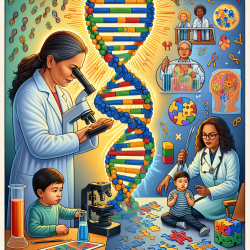Introduction
In the realm of drug discovery and development, Model-Informed Drug Discovery and Development (MID3) has emerged as a pivotal approach to enhance efficiency and decision-making. This blog post delves into the insights from the research article "Model-Informed Drug Discovery and Development: Current Industry Good Practice and Regulatory Expectations and Future Perspectives" to guide practitioners in leveraging MID3 for improved outcomes.
The Role of MID3 in Drug Development
MID3 utilizes quantitative modeling approaches throughout the drug development process, from biomarker selection to dose/regimen selection and regulatory approval. The approach integrates current knowledge about the drug, disease, and mechanism of action to predict new outcomes under various conditions. This predictive capability is crucial in reducing costs and cycle times, thereby increasing the efficiency of developing new therapies.
Current Practices and Regulatory Expectations
The research highlights that documented industry good practices in MID3 align well with current industry practices and regulatory expectations, though some gaps remain. A survey conducted among clinical pharmacology and pharmacometric professionals revealed a general consensus that MID3 practices are a "good match" to regulatory expectations, with a need for further education and communication to increase acceptance.
Implementation and Impact of MID3
Over the past five years, there has been a significant increase in the implementation and application of MID3 within organizations. This trend is expected to continue, with MID3 playing an increasingly central role in decision-making and enhancing research and development efficiency. The study indicates a growing organizational awareness of the utility of MID3, with expectations for substantial future impact.
Challenges and Future Directions
Despite the progress, the study identifies challenges such as the need for a global regulatory framework to facilitate wider acceptance and application of MID3. The development of such guidelines could harmonize practices and improve the consistency of technical aspects across specific guidelines. Additionally, there is a need for continuous education of decision-makers to bridge the communication gap between modeling scientists and other stakeholders.
Practical Steps for Practitioners
- Engage in continuous education and training to stay updated on MID3 practices and regulatory expectations.
- Foster early communication with regulators to align on the use and qualification of specific models.
- Participate in workshops and professional body activities to exchange knowledge and best practices.
- Integrate MID3 approaches early in the strategic planning of drug development projects.
Conclusion
Model-Informed Drug Discovery and Development is a transformative approach that holds promise for improving drug development efficiency and outcomes. By understanding and implementing the insights from current research and industry practices, practitioners can enhance their skills and contribute to the advancement of therapeutic development.
To read the original research paper, please follow this link: Model-Informed Drug Discovery and Development: Current Industry Good Practice and Regulatory Expectations and Future Perspectives.










